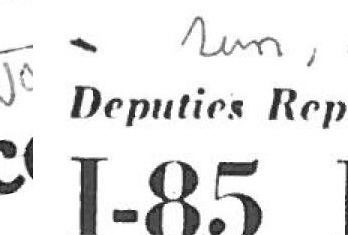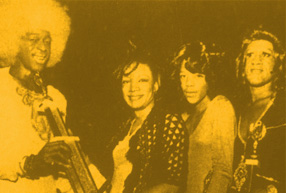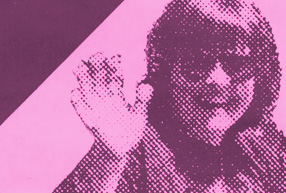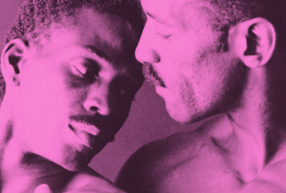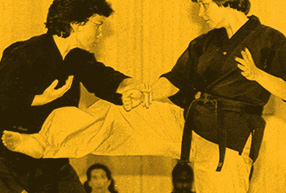-
Arts + Culture Interview excerpt about local gay spaces in the 1960s

Following are excerpts from an interview with a white gay man who lived in the Durham area in the 1960s. He wished to remain anonymous.
Transcript Interviewee … I knew where the places were to go and meet people. … Wilson Library at UNC, for instance, was pretty open. And I guess that hotel that became the Jack Tar [the Washington Duke Hotel]… . There was a bar there. You could meet people with similar interests, shall we say. And … there was a place in southern Durham County, I think called the Ponderosa…. It was out in the boonies and people would go out there for drinks and get together.
And around the [Duke] campus you could meet people, too. But it was much more open in Chapel Hill than it was in Durham. Once at a Friends of the Library dinner at UNC, there was a visiting speaker…, a poet. She spoke to the group and made very clear that she knew of the scene at the Wilson Library and people were like (he gasps).
I don’t know about the scene for blacks. Sometimes you’d see blacks in these other places, of course.
Interviewer … at the Ponderosa?
Interviewee Yes, oh yes. It was a very democratic crowd, I would say.
LGBTQ Collection, North Carolina Collection, Durham County Library
-
Health, Audio + Video Clips Audio clip about the consequences of a lesbian relationship in the 1960s

Cathy Chandler grew up in North Carolina in the 1950s and early 1960s. In high school, she fell in love with a girl, and they were turned in for being lesbians. In this clip, Cathy tells of her subsequent experience with psychoanalysts.
Transcript My pediatrician recommended my parents send me to a psychoanalyst. The psychoanalyst asked me, “If your husband was in politics, would you help him with his campaign?” I said yes; it seemed like the right answer. Actually not. Both driving and politics were male, and from a psychiatric perspective, a woman who showed any interest in politics was, by definition, a lesbian. (Applause and laughter) At the time, I had no interest in politics, and was ambivalent about husbands. (Laughter)
I had dressed up for this man: wrap-around skirt, villager blouse, Weejuns, and a charm bracelet. Still, he told my parents I needed to see him three times a week for two years. That was about like a death sentence to me. I felt branded as sick. Under the law, he could have suggested institutionalization, shock therapy, aversion therapy, or lobotomy. …
I fought back. We [she and the other girl] both remained true to our feelings and concerns for how each other was doing, but we had to face our own individual futures. I fought to maintain my own sense of self, that sense of who I’d been and the values I had. Religion, the law, and psychiatry were my adversaries, but after holding my own for years with my mother, I felt I was equal to the fight. Even though it was the weakest of the three, psychiatry—by branding us, branding me, as sick—was the worst, the one I’ve railed against the most.
“Coming Out in the South” panel, April 22, 2012, LGBTQ Collection, North Carolina Collection, Durham County Library
-
Politics + Activism, Safety SBI Accuses Five of Immoral Acts
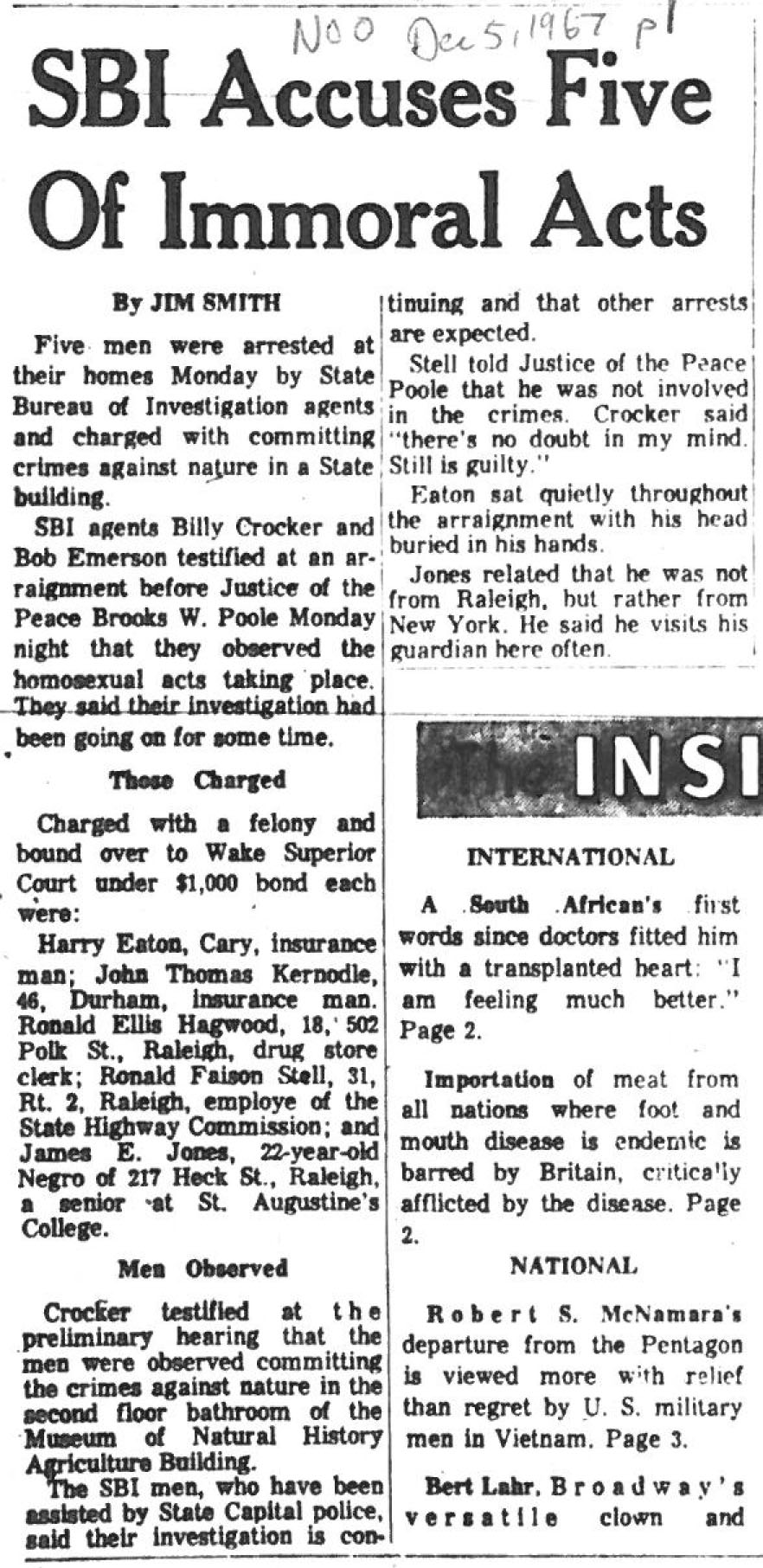
Raleigh News and Observer, Dec. 5, 1967 Before the 1970s the only articles to be found about LGBTQ+ people in mainstream newspapers focused on encounters with law enforcement or homosexuals as victims of violent crimes.
-
Politics + Activism, Safety I-85 Rest Areas Said Problems

Durham Sun, Sept. 23, 1970 Before the 1970s the only articles to be found about LGBTQ+ people in mainstream newspapers focused on encounters with law enforcement or homosexuals as victims of violent crimes.
- Before the 1970s
- The 1970s
- The 1980s
- The 1990s
- The 2000s
- The Present


